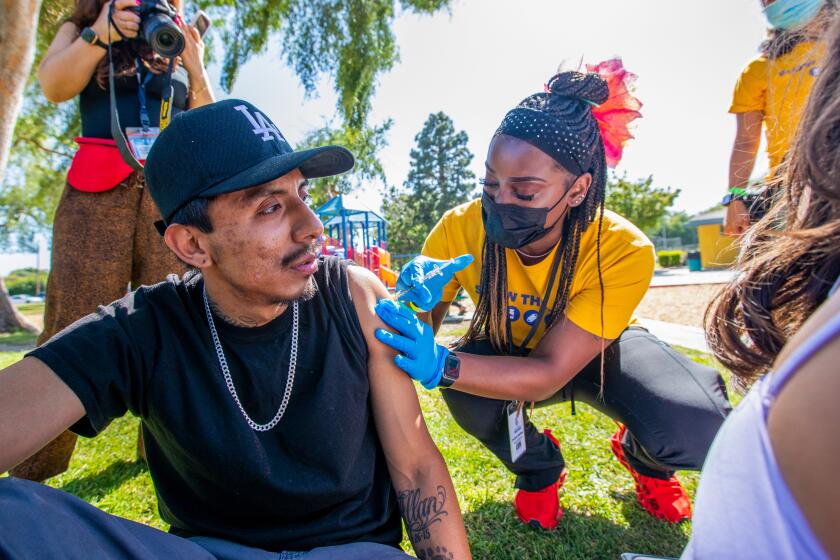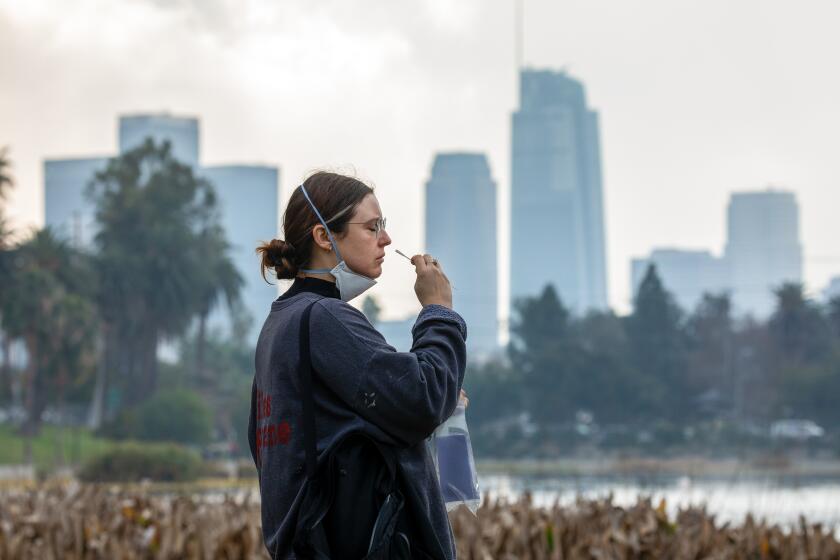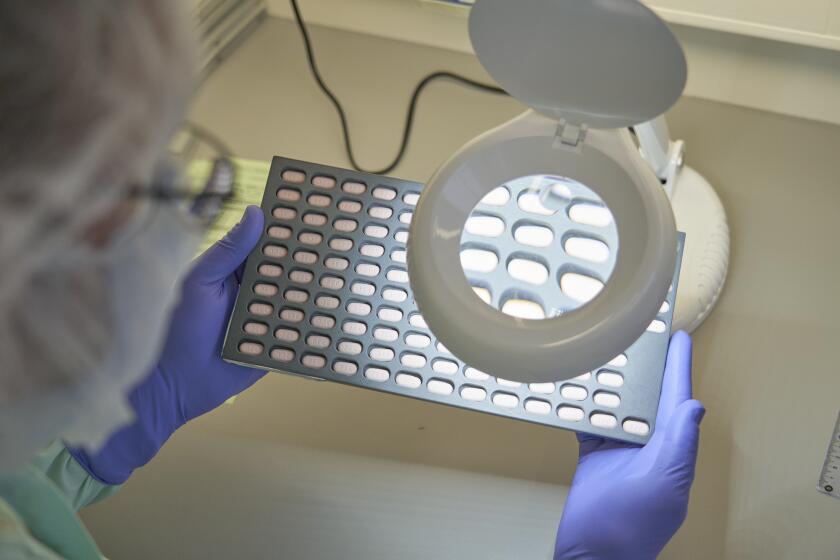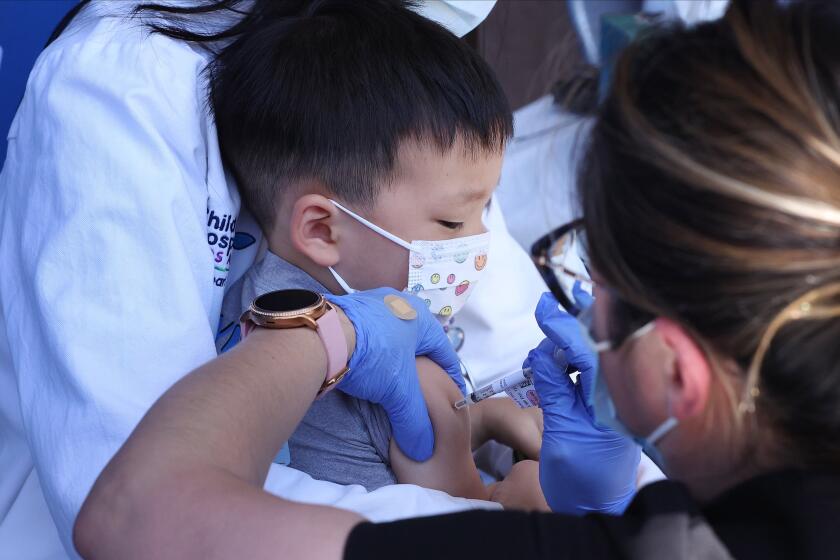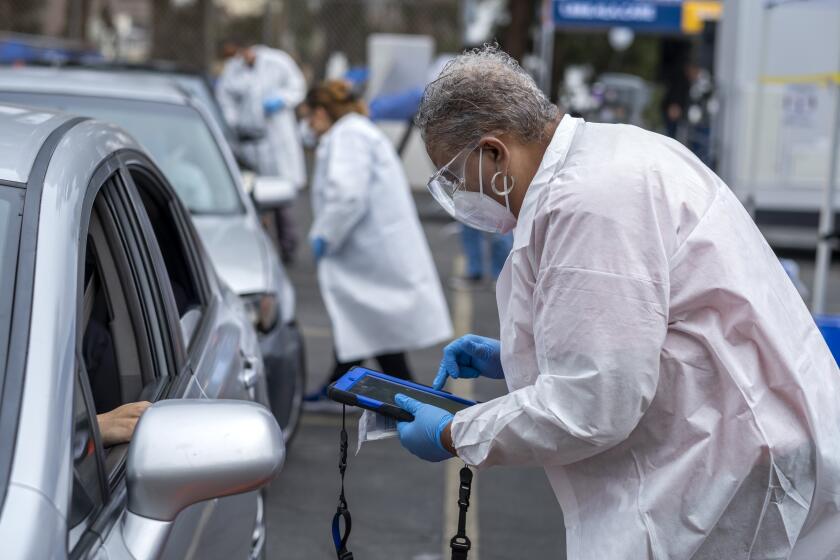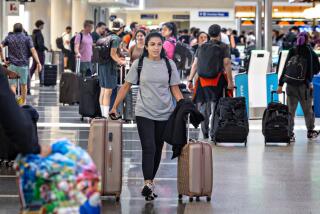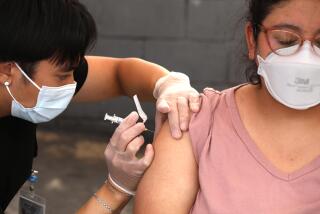I have COVID-19. What to know about Paxlovid, molnupiravir, other treatments in California
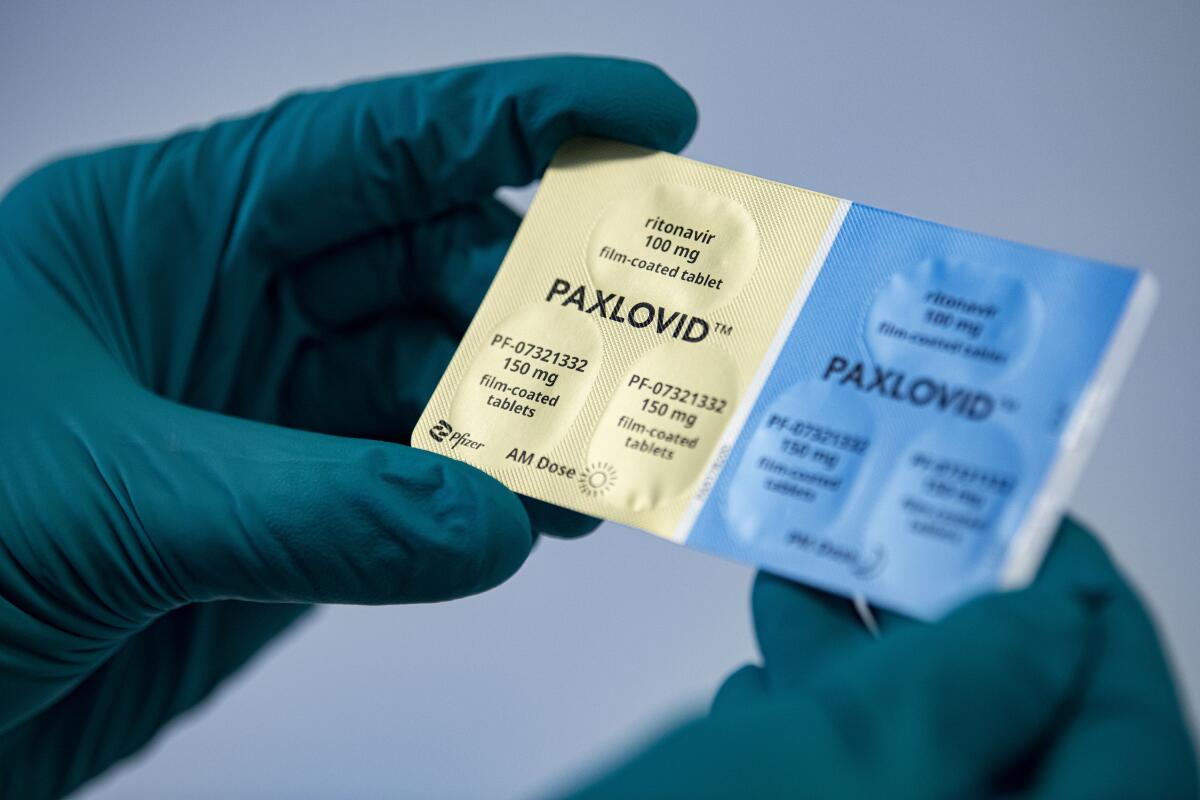
The lines on the at-home test made it official: You’re positive for the coronavirus.
Now what?
Week over week, tens of thousands of Californians are asking themselves that same question, as the pandemic’s latest wave continues to demonstrate its stubborn sticking power.
Here are some important steps you can take:
Getting vaccinated and boosted and wearing a mask in crowded indoor settings are still the best protections, health experts say.
See if you’re eligible for anti-COVID drugs
There are two antiviral oral medications available for eligible patients, and they can get them at no cost.
But you need to start taking the pills within five days of the start of symptoms. With all anti-COVID drugs, it’s best to take the drugs as soon as symptoms begin.
Paxlovid is available for people age 12 and older who weigh at least 88 pounds.
Molnupiravir can be given to those 18 and over, but it is not advised for patients who are pregnant and is recommended only if other medications aren’t available.
Recipients are eligible if they have one or more risk factors for progression to severe COVID-19. Ask your healthcare provider whether you qualify.
Health officials have said before that the eligibility criteria are quite broad, and it’s likely that many patients would qualify for the drugs. They include being older or having conditions such as being overweight — a category that covers 74% of U.S. residents — physical inactivity, high blood pressure, having ever smoked, being currently or recently pregnant and having an alcohol or drug use disorder, depression, heart disease, asthma or diabetes.
Healthcare providers can consider the benefits of prescribing the drug to any individual patient, according to a Food and Drug Administration checklist.
Paxlovid’s manufactuer, Pfizer, said in a statement in mid-June that there wasn’t evidence that Paxlovid helped patients who weren’t at higher risk of severe disease. Pfizer said it was ending a study testing Paxlovid in people not at higher risk.
A federal website lists pharmacies that have the pills.
Since the hyper-transmissible Omicron variant appeared in early December, the coronavirus has affected nearly every family and social circle.
If you can’t get an appointment with your doctor or don’t have one, you also can go to a “test to treat” site such as a pharmacy or clinic where you can get get tested and an onsite healthcare provider can authorize a prescription and/or provide the medication to you.
The Los Angeles County Department of Public Health also has a free call-in service to report a positive test, talk to a healthcare provider, get a prescription and even get the pills sent to you at no cost. Call (833) 540-0473 for more information. The call center is open seven days a week from 8 a.m. to 8:30 p.m.
There are also injectable medications to treat COVID-19.
Remdesivir, an antiviral medication, can be given to patients as young as 28 days old and who weigh at least 6.6 pounds. It should be given within seven days of the start of symptoms.
Another injectable drug, Bebtelovimab, is a monoclonal antibody and can be given to those age 12 and older who weight at least 88 pounds. It is recommended only if other drugs aren’t available.
The drugs themselves are free, but the county health department suggests you check whether a treating facility will charge for administering them.
The county advises on its website that patients first see if their insurance plan covers those charges. “If you do not have insurance, ask the treatment facility if there are fees,” it says.
Medicare and Medi-Cal cover all costs for enrollees.
L.A. County has launched a program that offers anti-COVID pills for free to infected people who get tested, or show test results, at select pharmacies.
Be aware of post-Paxlovid rebound
Some coronavirus-positive patients who have completed treatment with Paxlovid are getting sick again, and experts are urging people to be cautious if they develop COVID-like symptoms again and become infectious.
“In some of these cases, patients tested negative on a direct SARS-CoV-2 viral test and then tested positive again,” the FDA said.
The FDA said patients should wear a mask and stay home and isolate if they have any symptoms of COVID-19, regardless of whether they have been given an antiviral drug such as Paxlovid.
“People with recurrence of COVID-19 symptoms or a new positive viral test after having tested negative should restart isolation and isolate again for at least 5 days,” the CDC said in an advisory in late May.
Dr. Anthony Fauci, the nation’s top infectious disease expert, who tested positive for the coronavirus two weeks ago, said by video at the Foreign Policy Global Health Forum Tuesday that he had recurrent COVID-19 symptoms and began testing positive again after completing his first course of Paxlovid.
After completing the first five-day round, he tested negative for three consecutive days, but then tested positive on the fourth day. Over the next day or so, Fauci said he started to feel “really poorly, much worse than in the first go-around.” Fauci went on a second five-day course of Paxlovid, and on Tuesday, he was on the fourth day of the latest course of treatment, and said “fortunately, I feel reasonably good. I mean, I’m not completely without symptoms, but I certainly don’t feel acutely ill.”
Stay home
It’s basic, but it’s true. Those who have been infected should stay home as much as possible, except to get medical care, according to the Centers for Disease Control and Prevention.
Residents should also carefully monitor their symptoms for possible emergency warning signs — such as trouble breathing, persistent chest pain or pressure, confusion, an inability to wake up or stay awake, and skin, lips or nail beds that have taken on a pale, blue or gray hue.
Medical experts warn that repeated infections are getting more likely as the pandemic drags on and the coronavirus evolves.
“Please call your medical provider for any other symptoms that are severe or concerning to you,” the CDC says.
Also, if you’re showing signs of illness but testing negative, don’t be lulled into a false sense of security that you don’t have COVID-19. You can test negative even if you’re infected and contagious.
In general, tests are able to detect an Omicron infection, but enough virus needs to have reproduced and appear at sufficiently high levels in the nose or saliva to be detectable.
There is a potential blind spot of at least one day in which both PCR and rapid antigen tests are unable to detect the contagious status of a coronavirus-positive person.
“Probably the first day that you’re infectious with Omicron, you’re probably going to get a negative on [a rapid] antigen test,” Dr. Michael Mina, an epidemiologist and former professor at the Harvard T.H. Chan School of Public Health, said on the podcast “In the Bubble” in January.
The final major phase of the COVID-19 vaccination campaign kicked off this week, with California finally able to inoculate children under 5.
Isolate
Those who test positive should separate themselves from other people as much as possible. Stay in a specific room at home and use a separate bathroom, if possible. Should you need to be around other people or animals, wear a well-fitting mask.
Make sure to cover any coughs or sneezes and wash your hands often. Avoid sharing personal household items with others and, if possible, regularly clean high-touch surfaces such as counters and doorknobs.
In shared spaces, the California Department of Public Health also recommends opening windows to increase air flow, or using exhaust fans or air cleaners when possible.
Residents should isolate for at least five full days after the onset of symptoms, or the date of a positive test, state health officials say.
According to state guidelines, residents can exit isolation after five days if they test negative on or after the fifth day, do not have a fever and their symptoms are improving. If they test positive on or after Day 5, they should continue to isolate until a day after they get a negative test result, do not have a fever and their symptoms are improving.
Under the guidelines, residents can generally end isolation on the 11th day without needing to get a negative test result, as long as they’ve been fever-free without needing to use medicine.
Even if ending isolation earlier, state health officials strongly recommend masking around others — especially indoors — for the full 10-day period.
Despite the latest surge in coronavirus cases, the impact on hospitals has been relatively minor and COVID-19 deaths have remained fairly low and stable.
While California has issued recommendations for isolation, L.A. County still has a health order requiring isolation for infected people. It is largely similar to the state recommendations. Once you show symptoms or take a test that turns up positive, L.A. County requires you to isolate from other people for at least five days, and wear a mask around other people, suggesting that it be done even at home.
If you take a rapid test on or after the fifth day after symptoms begin, and the result is negative — and you’ve been fever-free for 24 hours without using fever-reducing drugs and you have no symptoms or they’re improving — you may end isolation on or after the sixth day. But you’re still strongly recommended to wear a mask around other people through the 10th day.
Otherwise, you can generally end isolation on the 11th day.
You might need to isolate for longer if you are immunocompromised or had severe COVID-19. And if you still have a fever, L.A. County asks that you stay in isolation until 24 hours after the fever ends.
More to Read
Sign up for Essential California
The most important California stories and recommendations in your inbox every morning.
You may occasionally receive promotional content from the Los Angeles Times.
